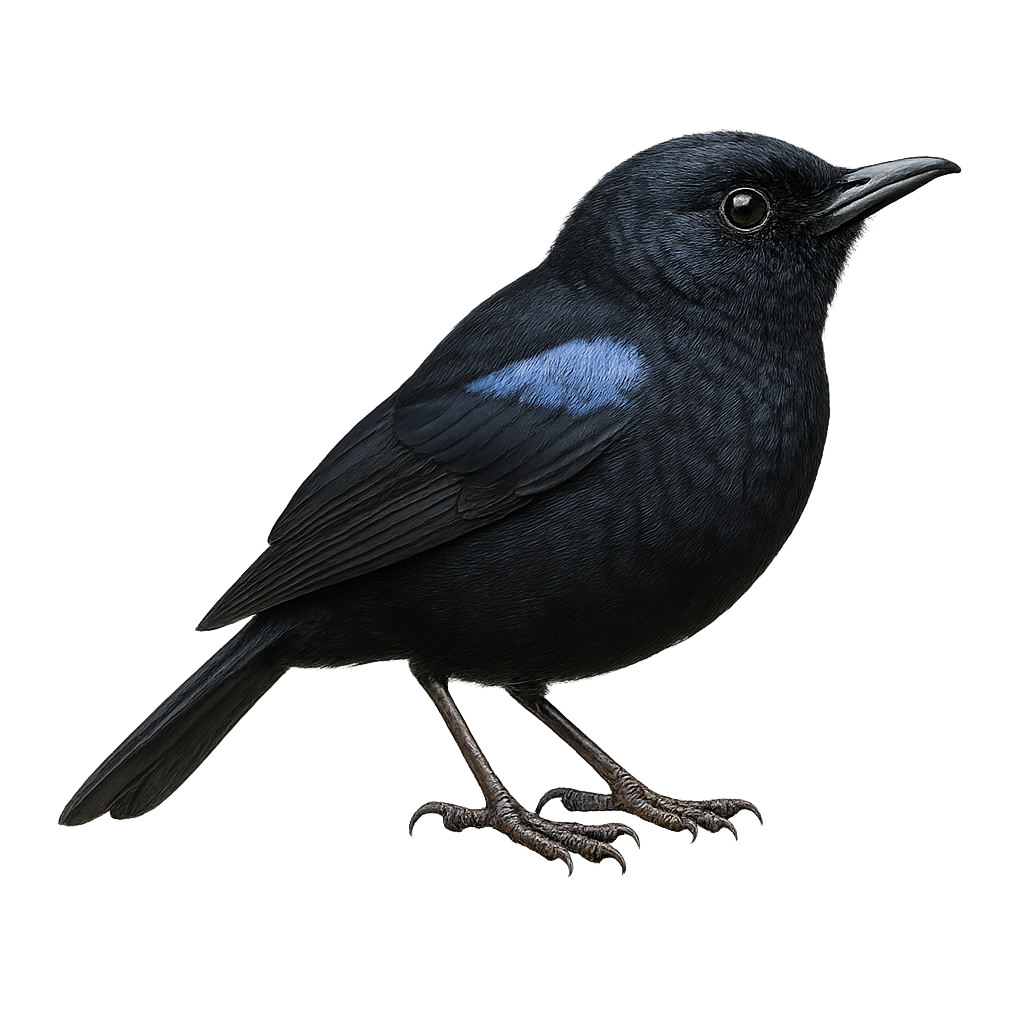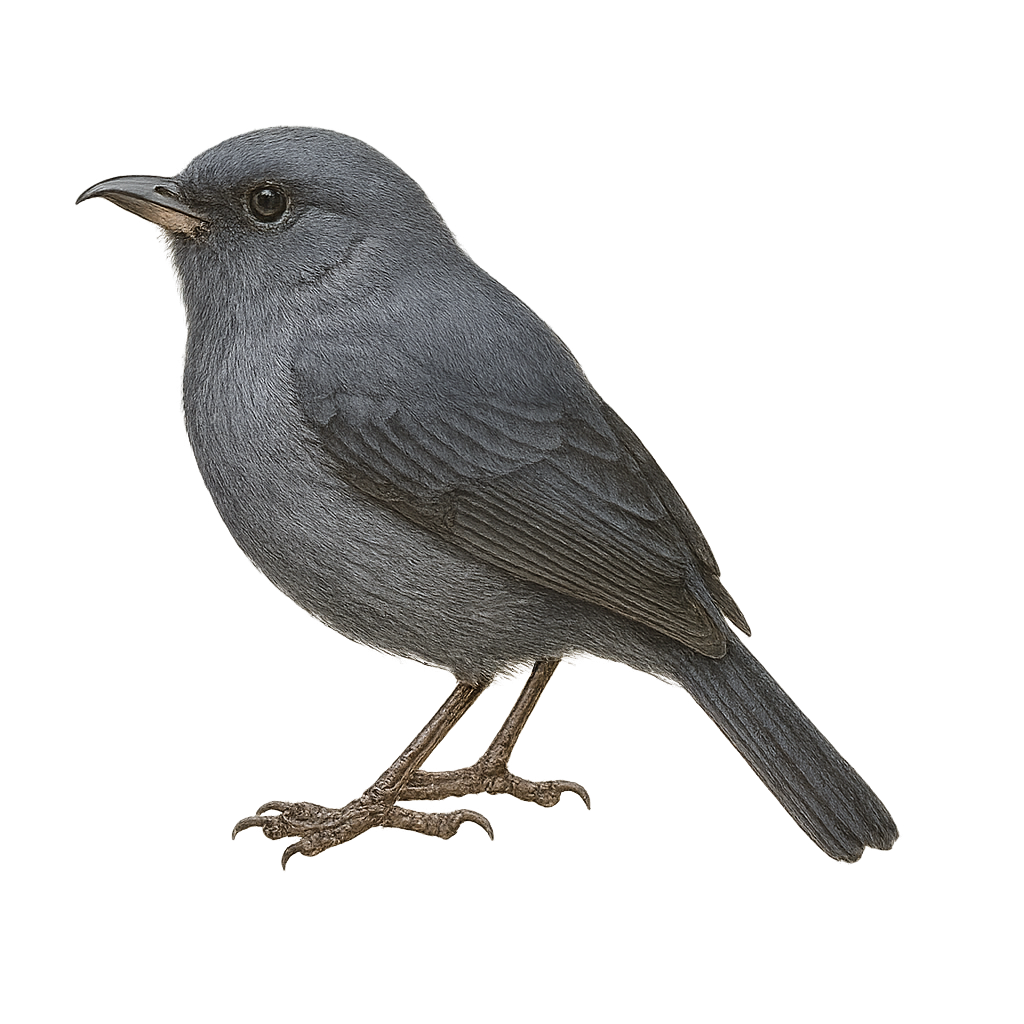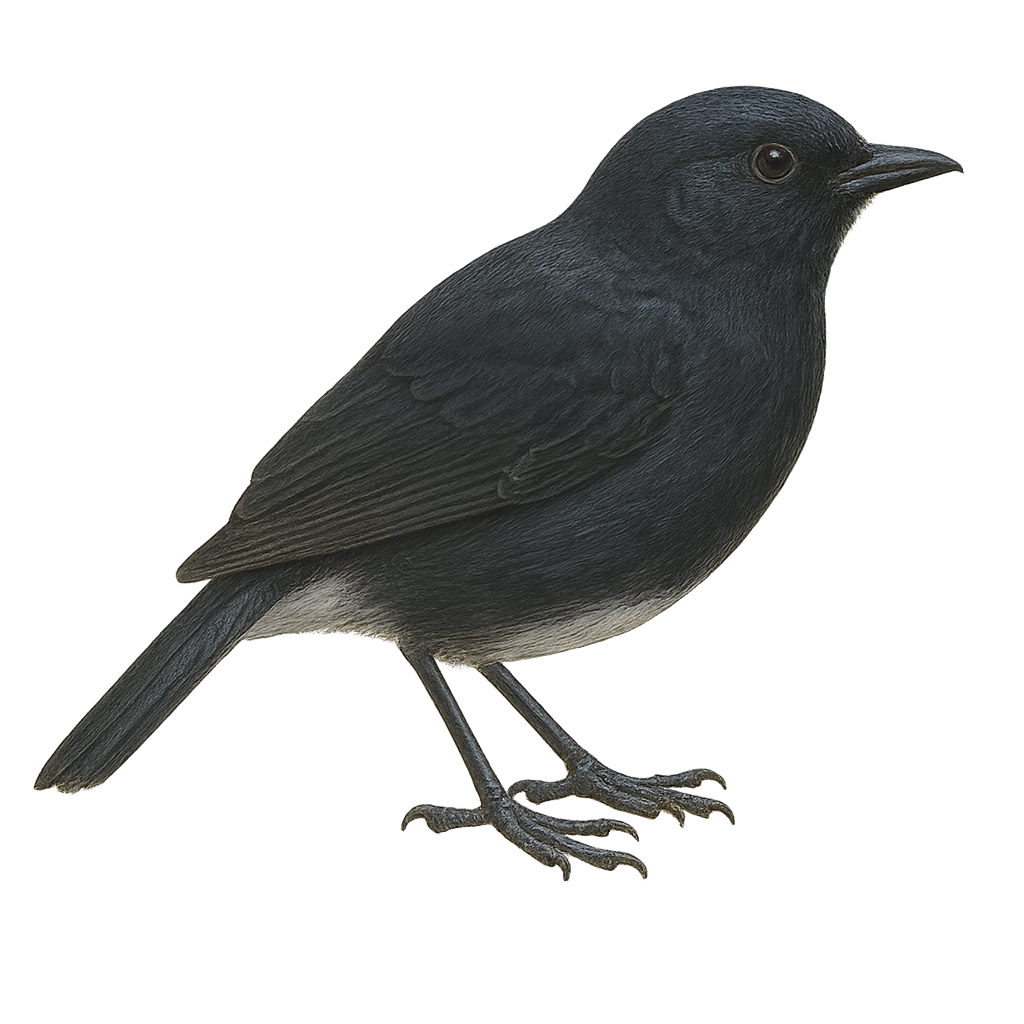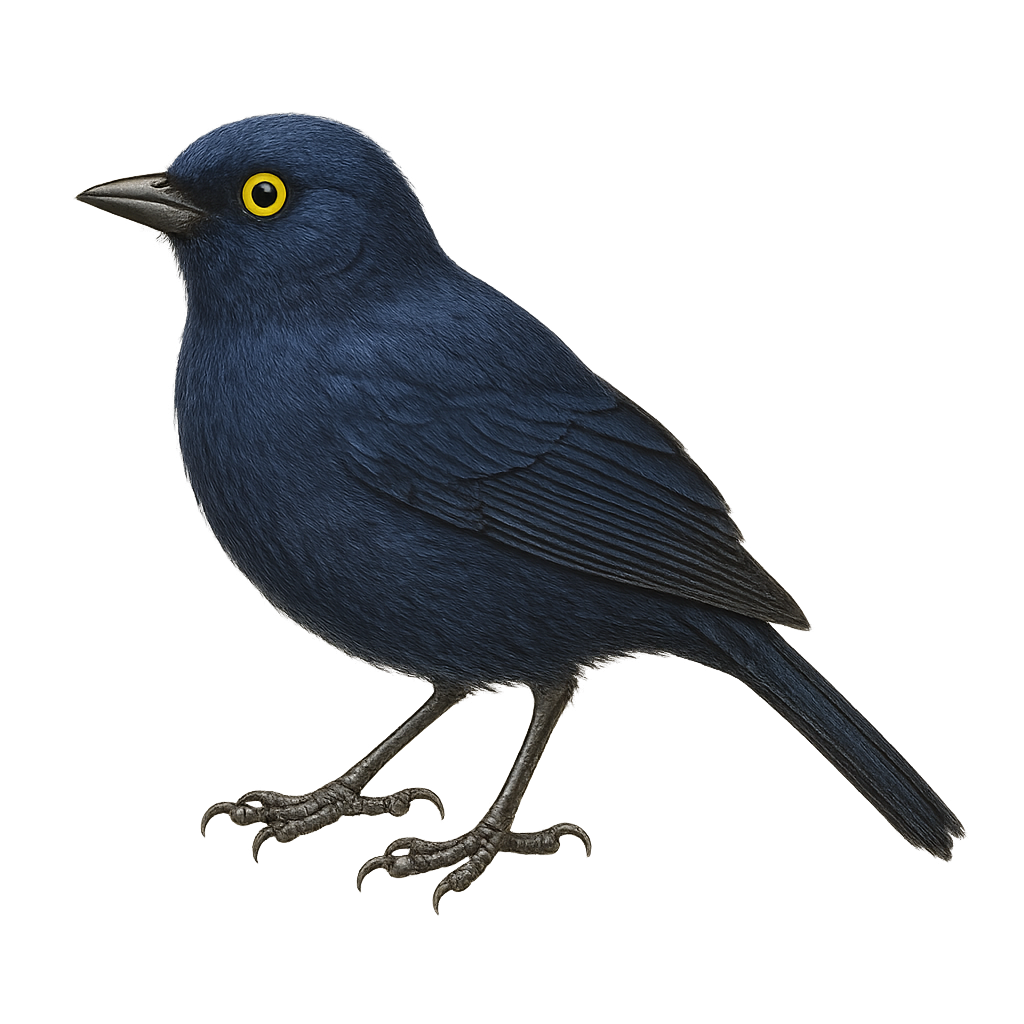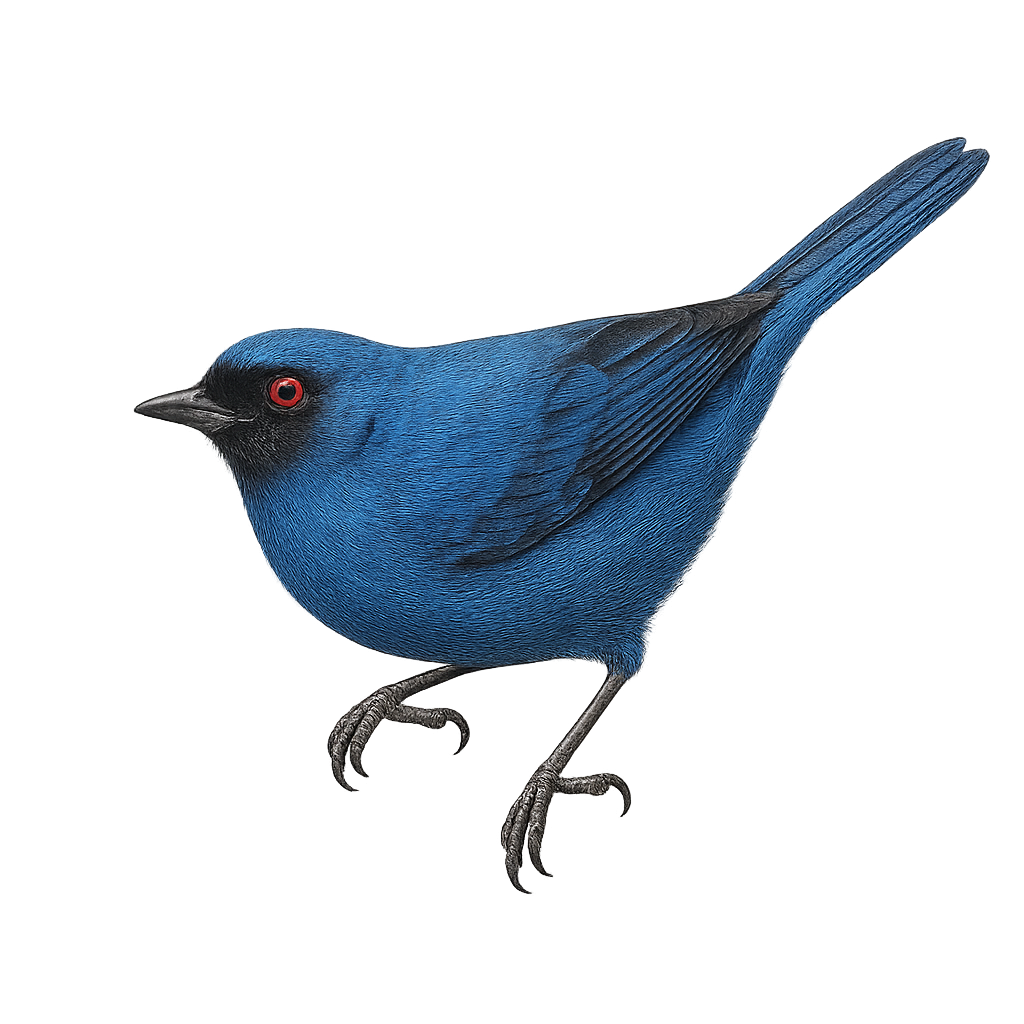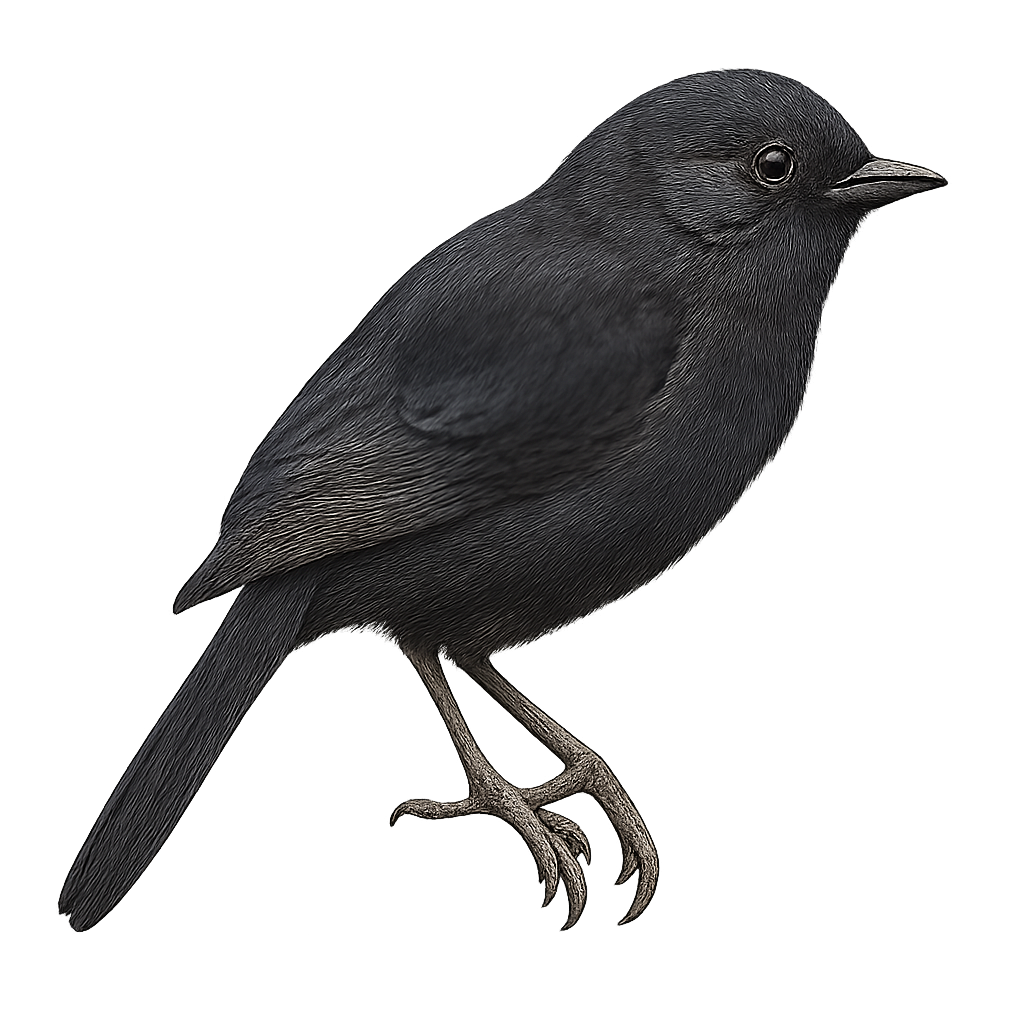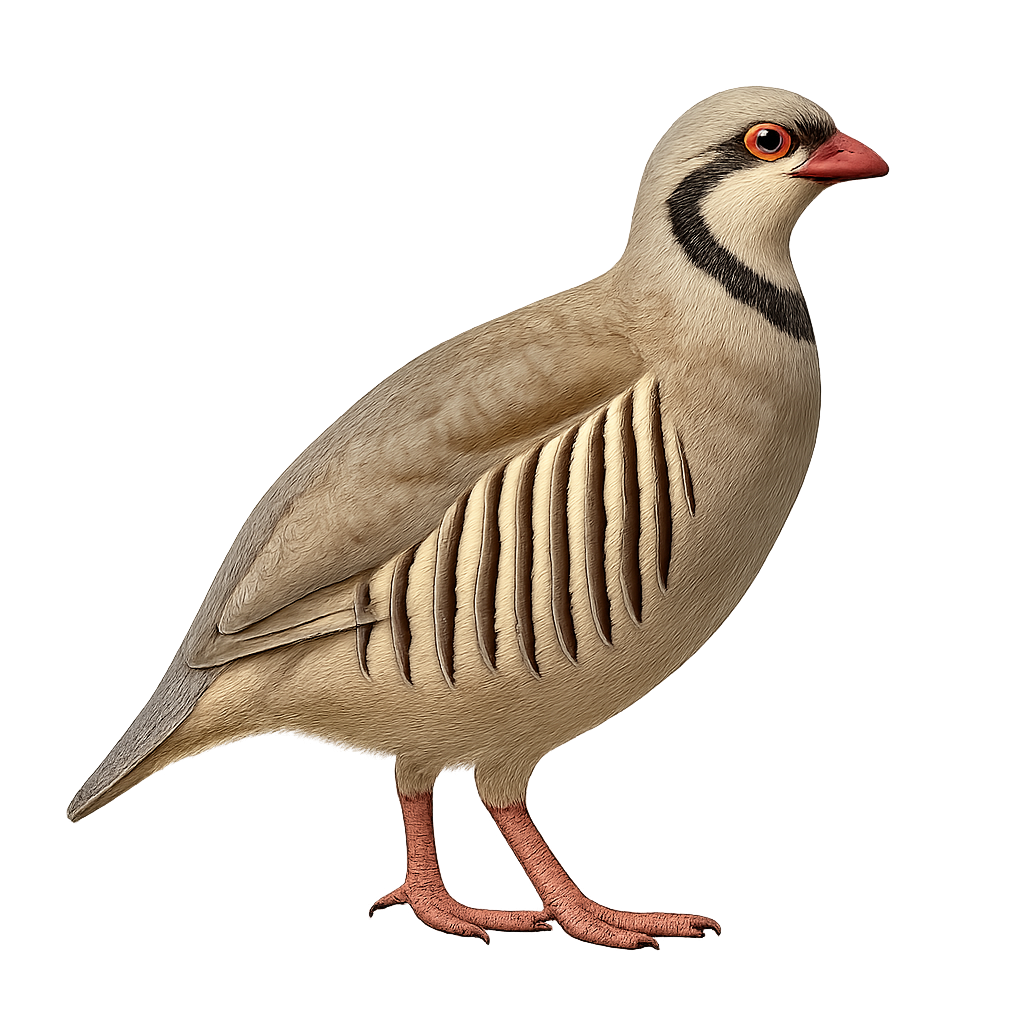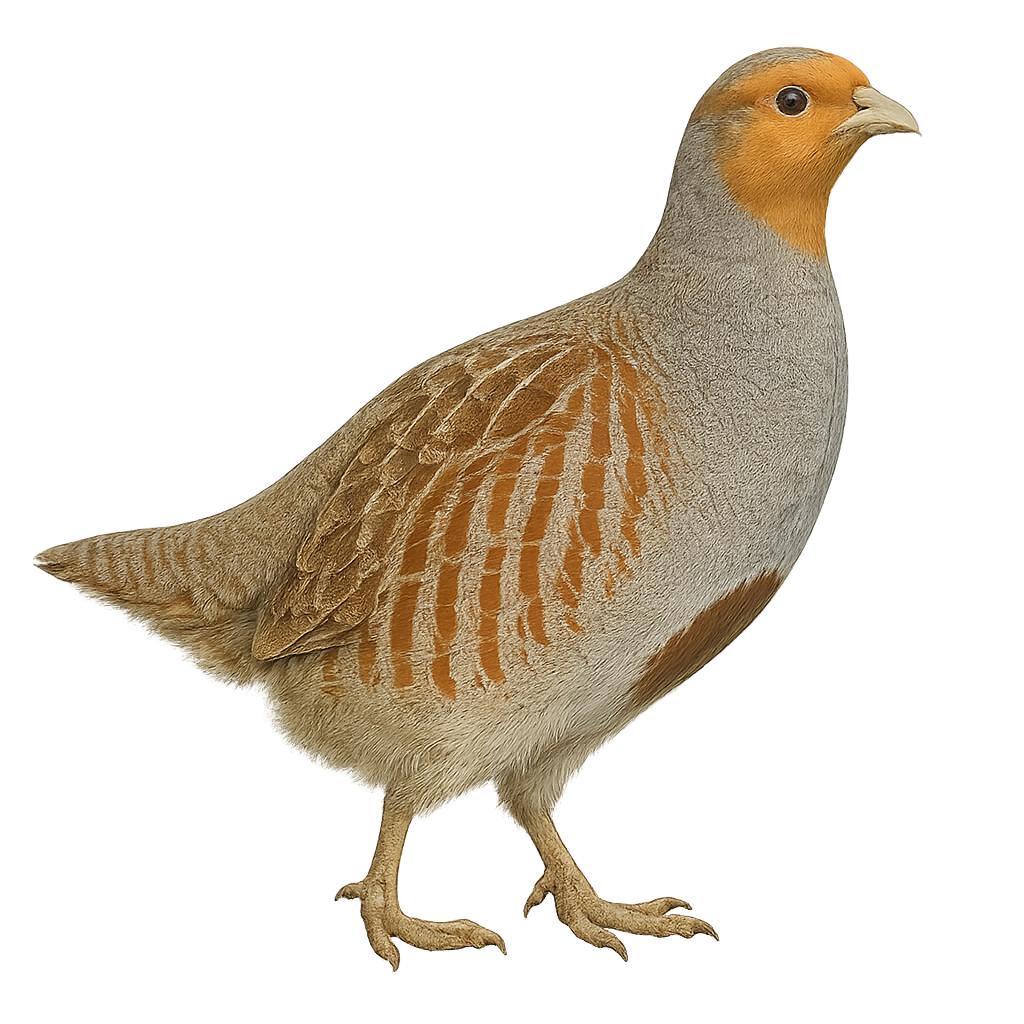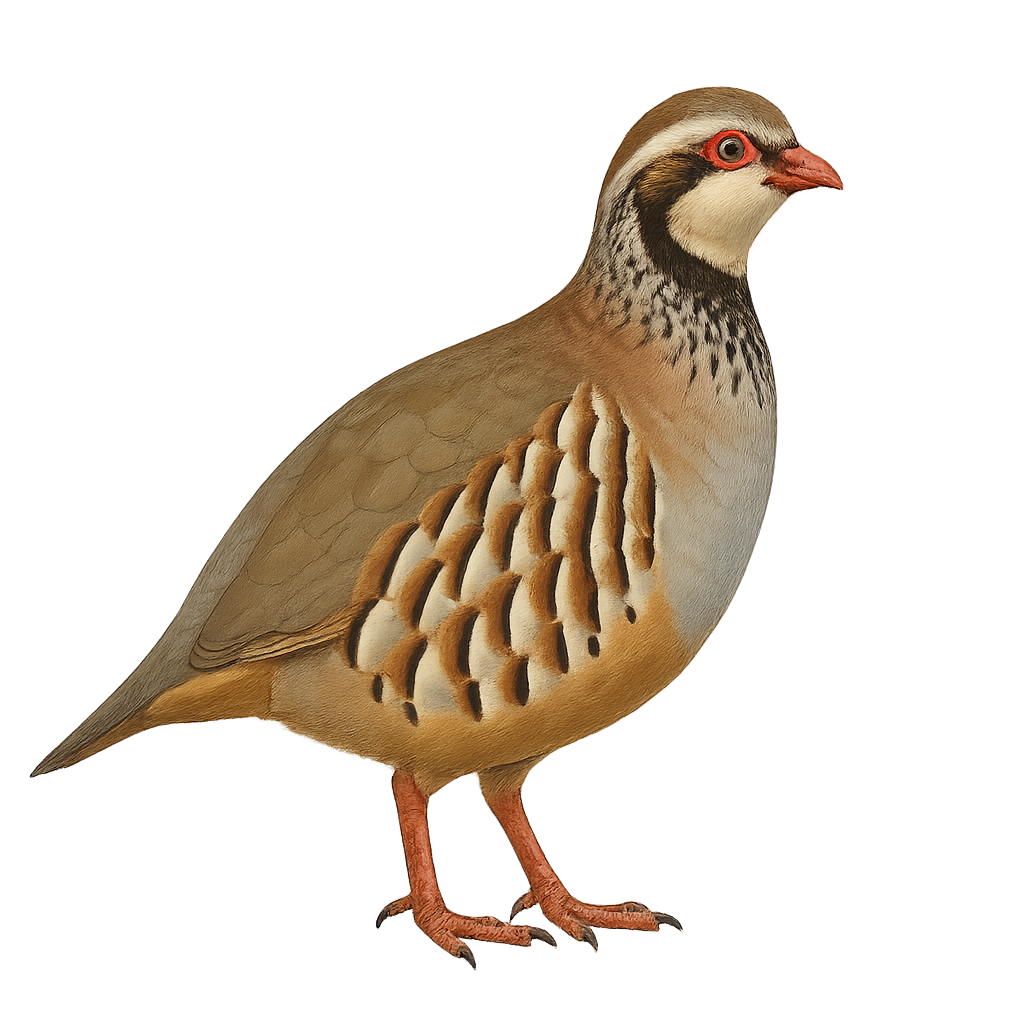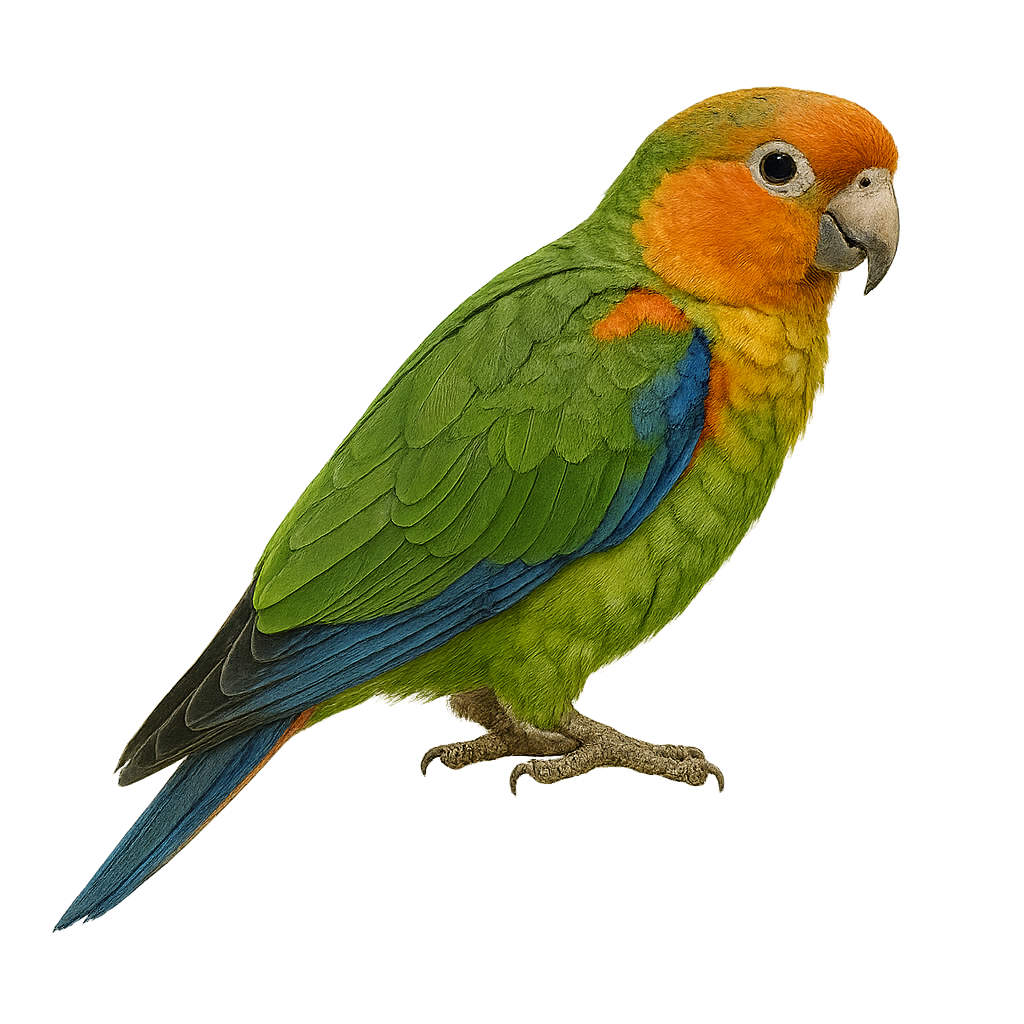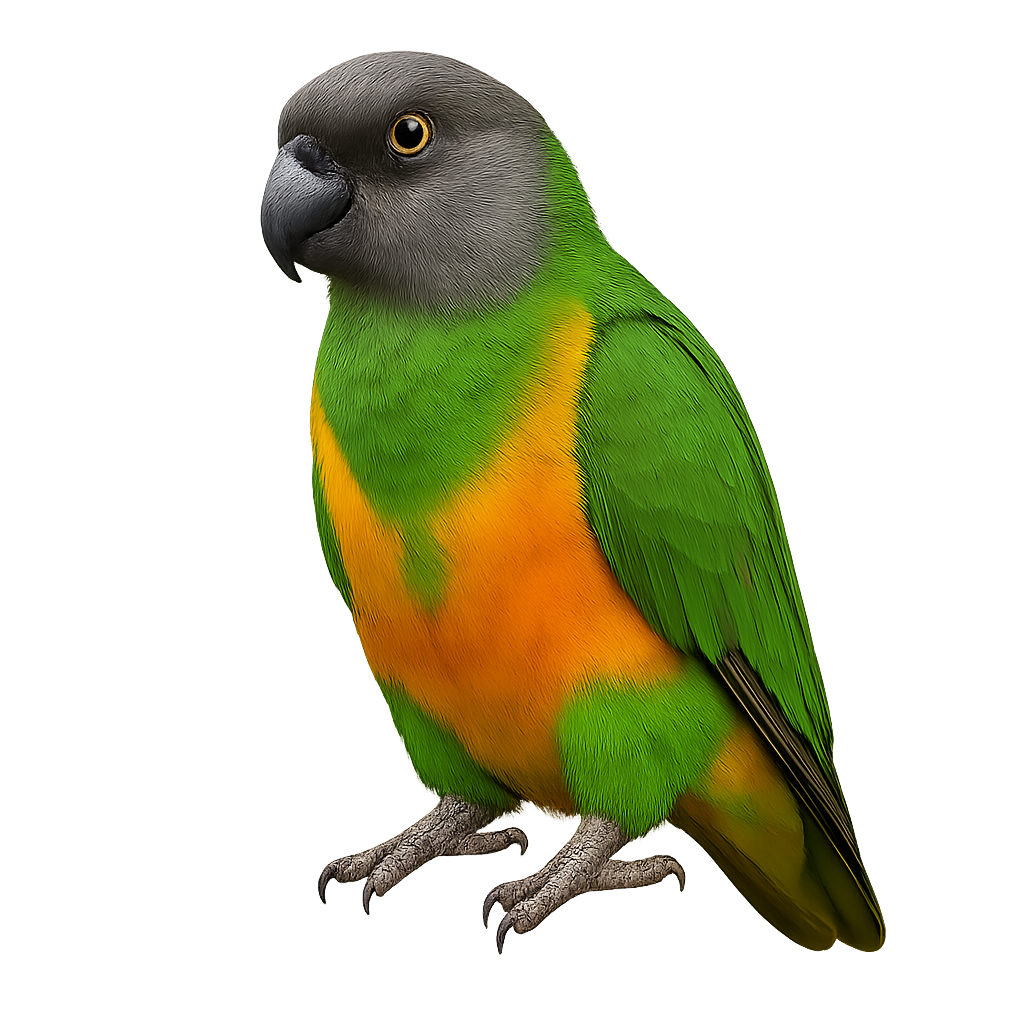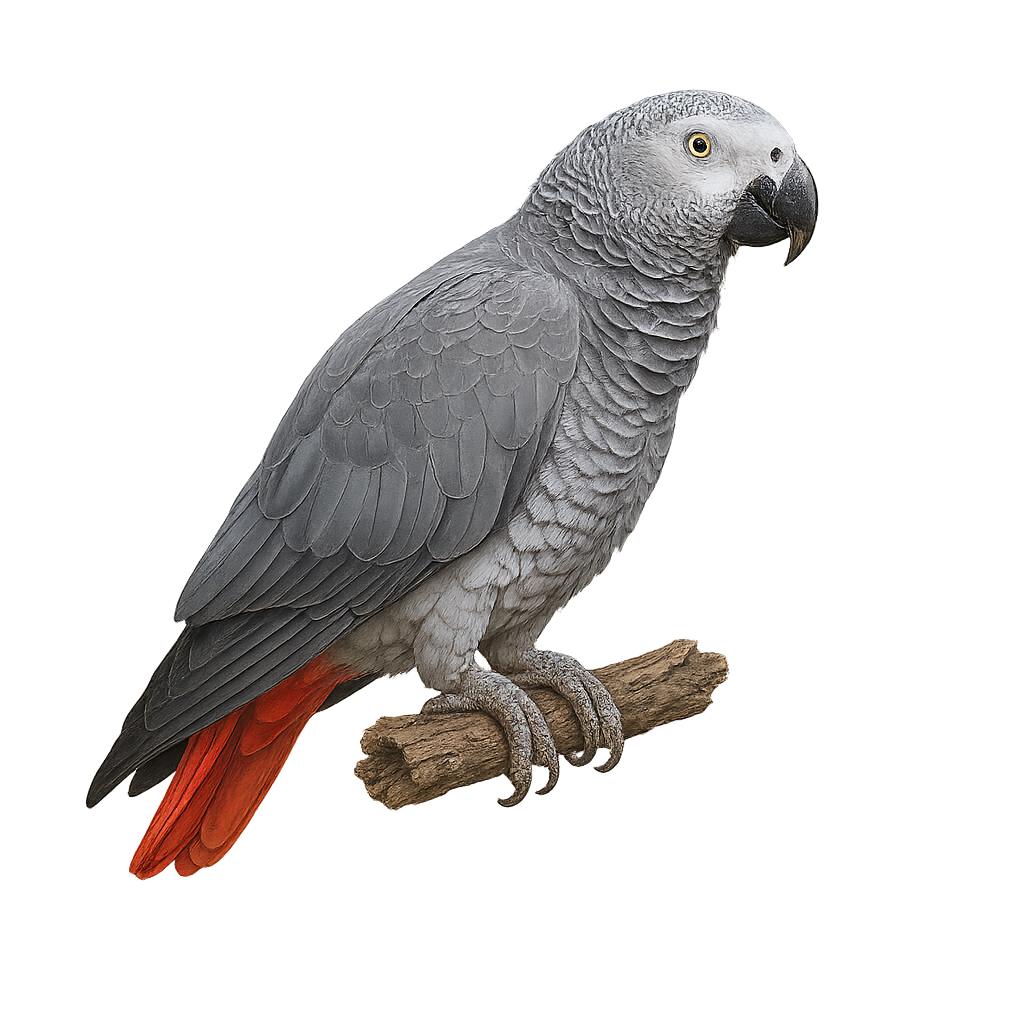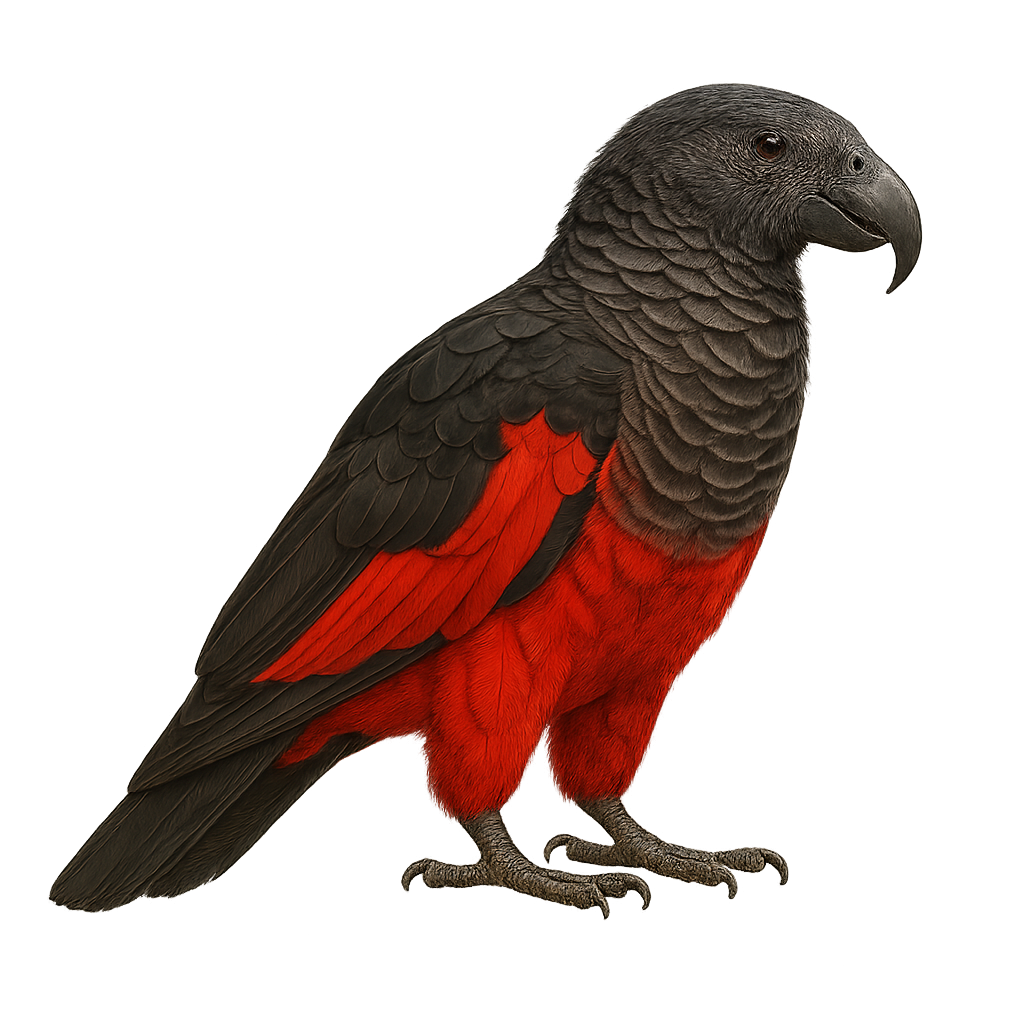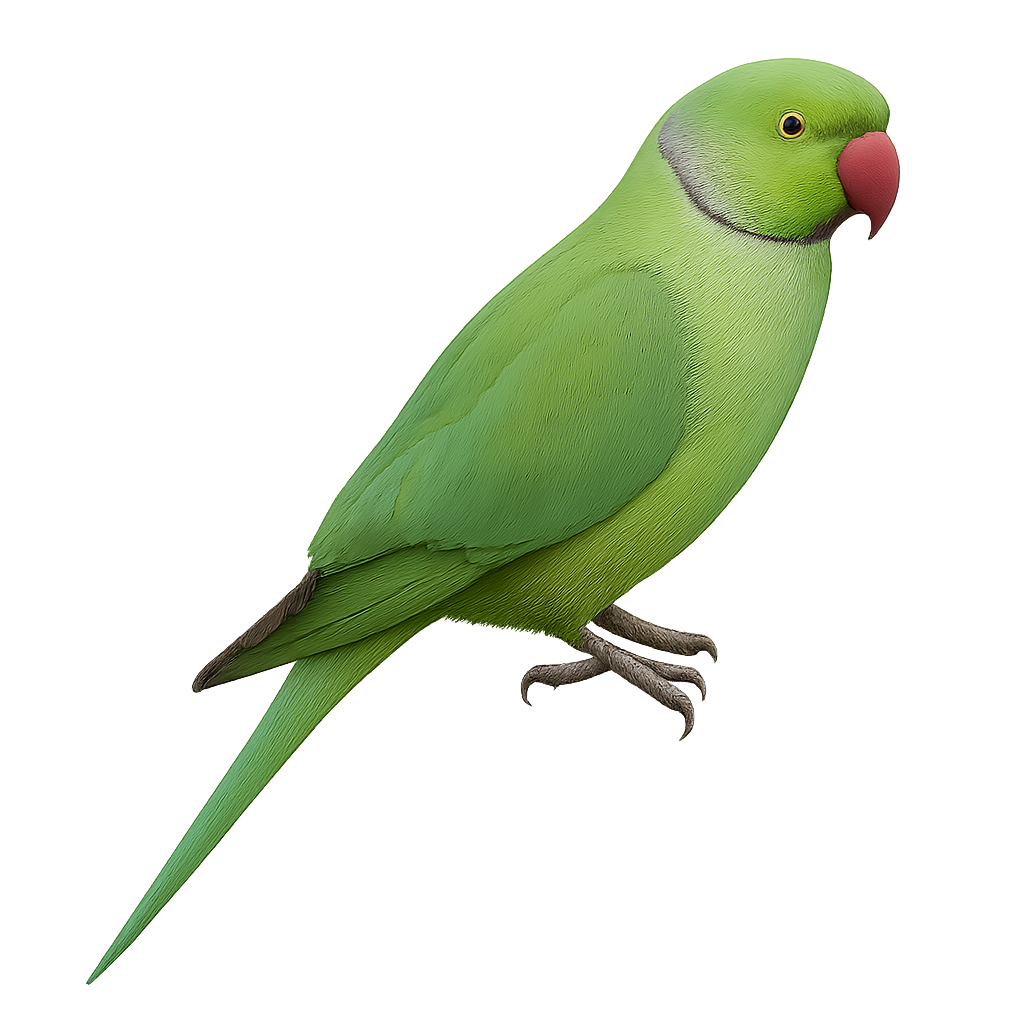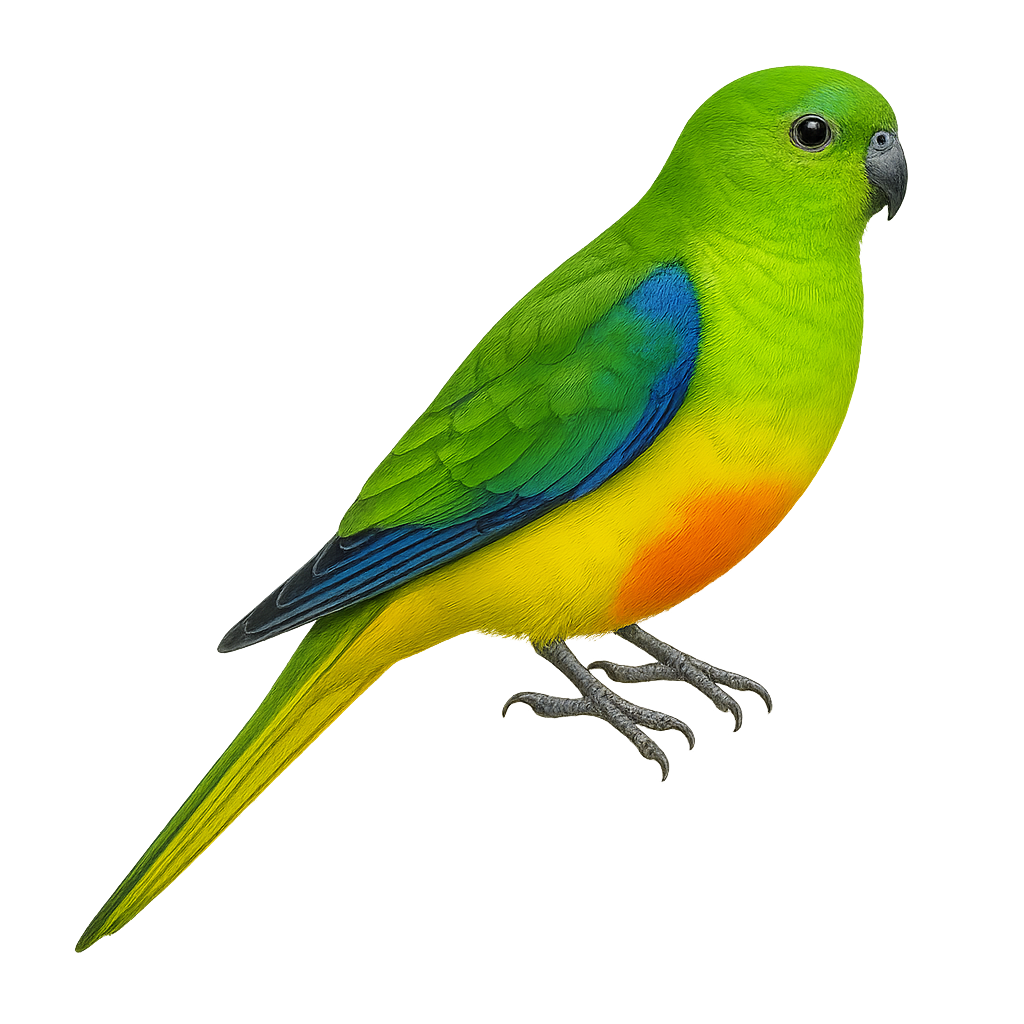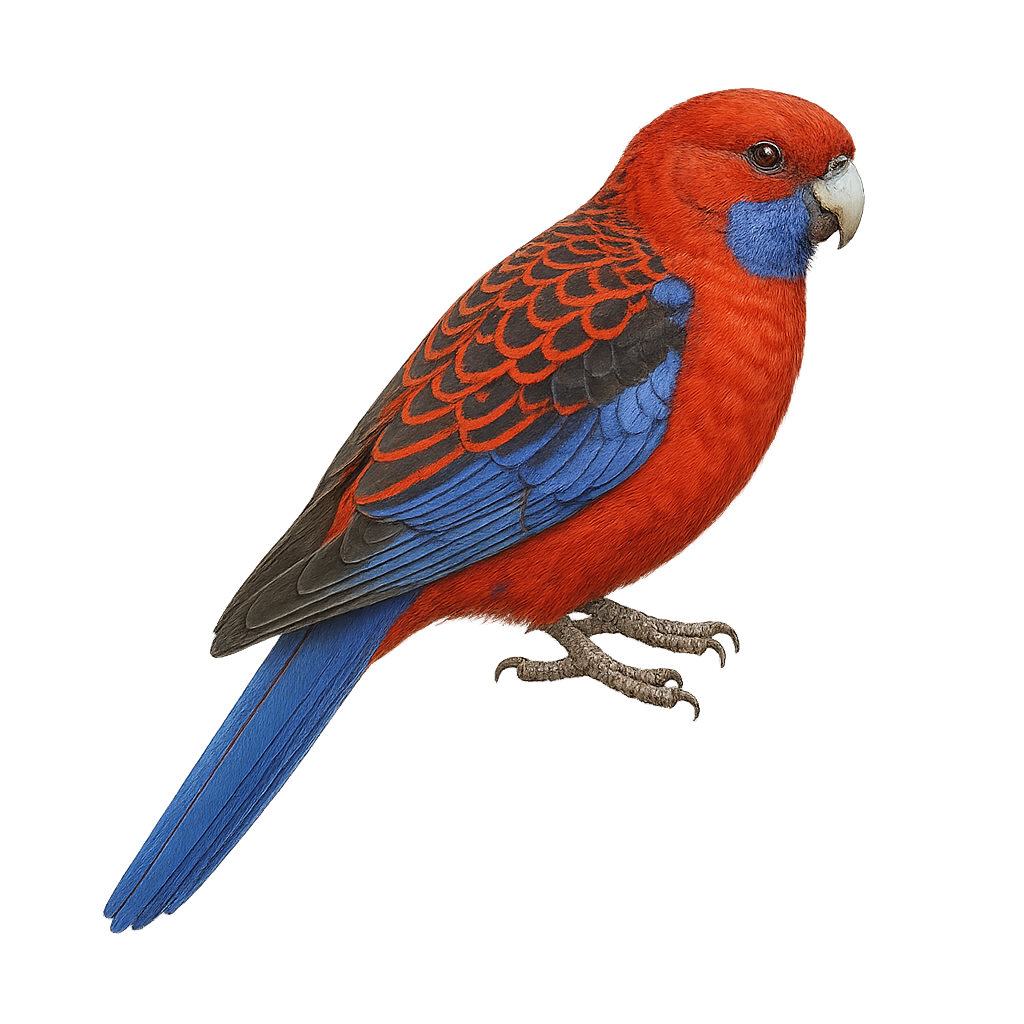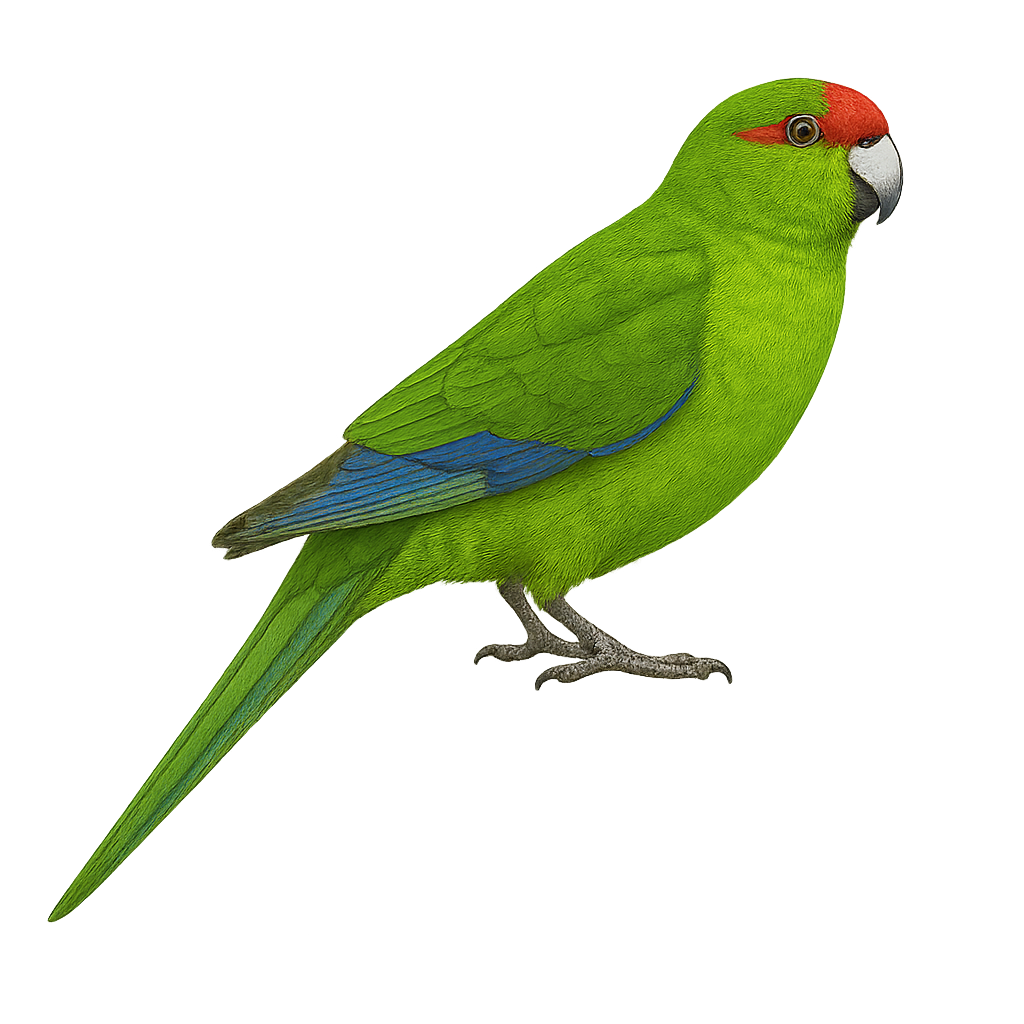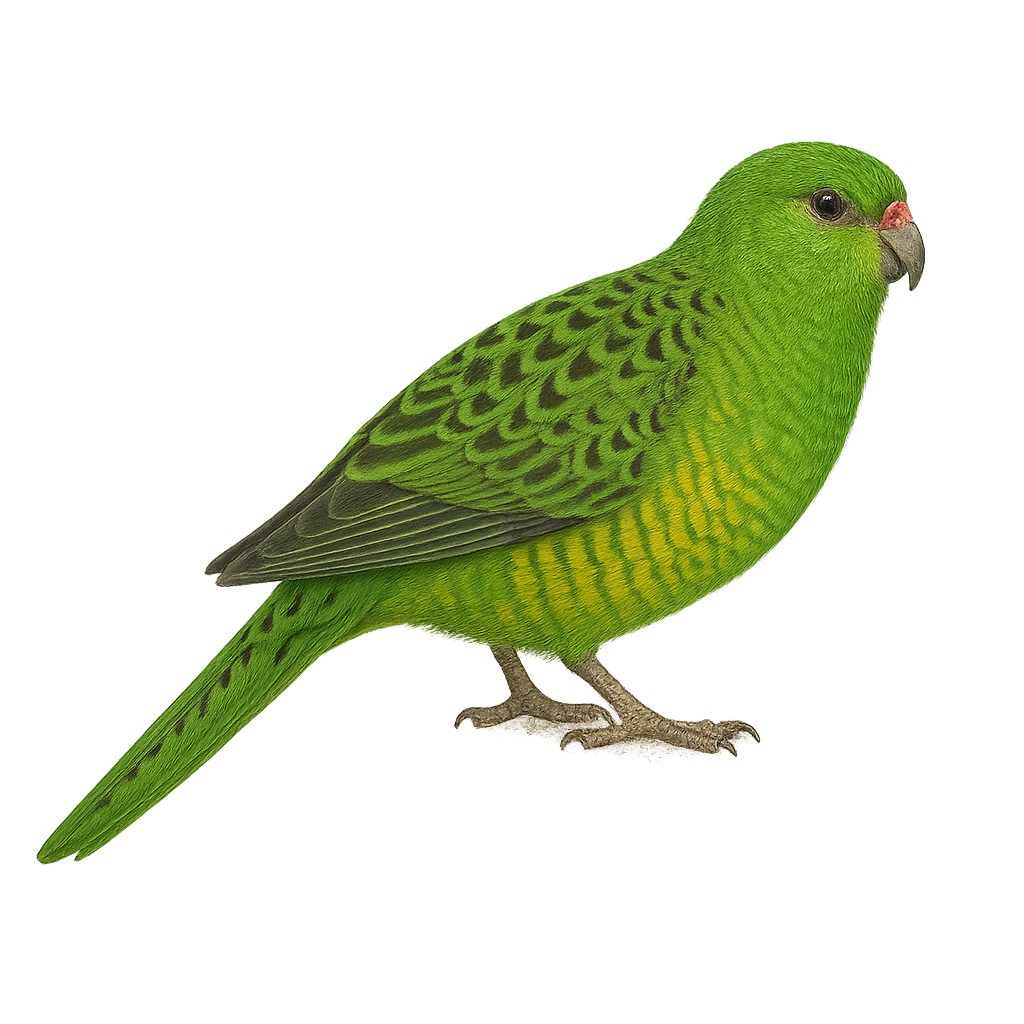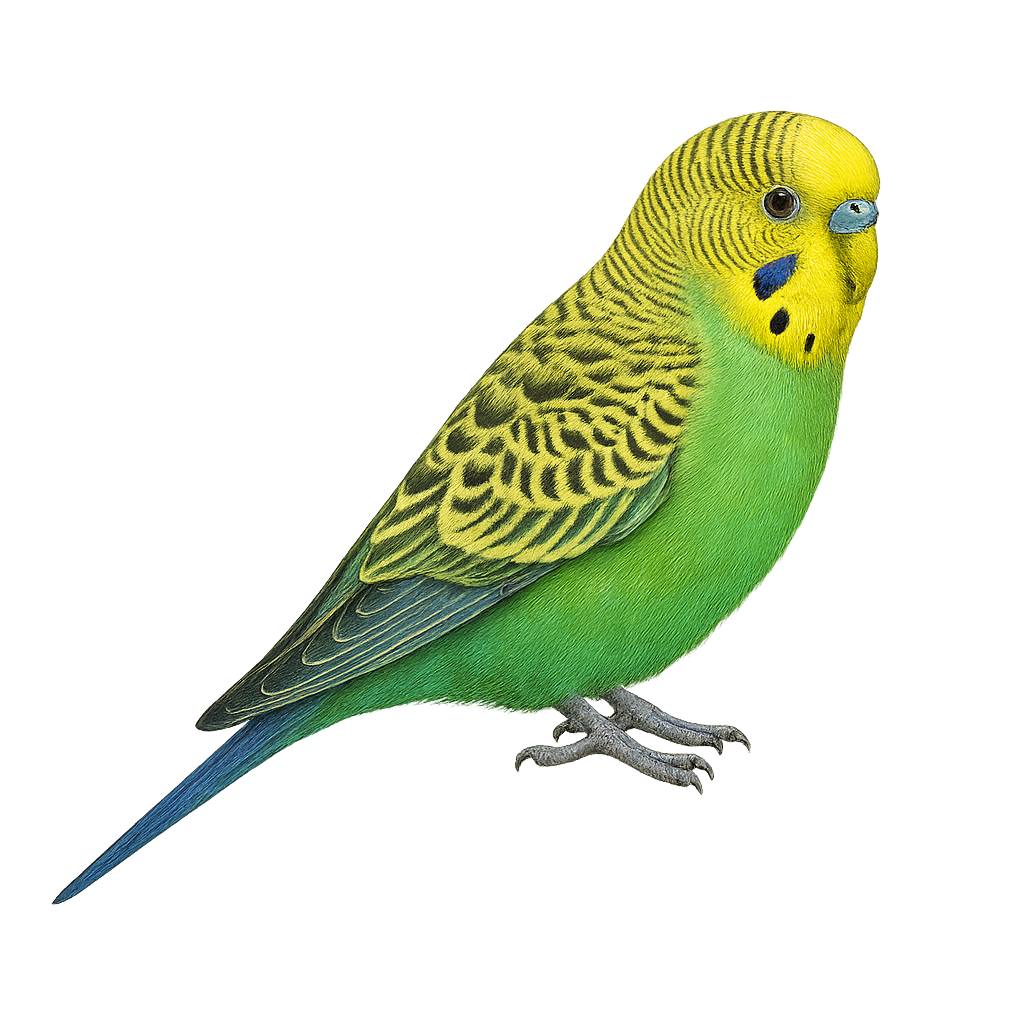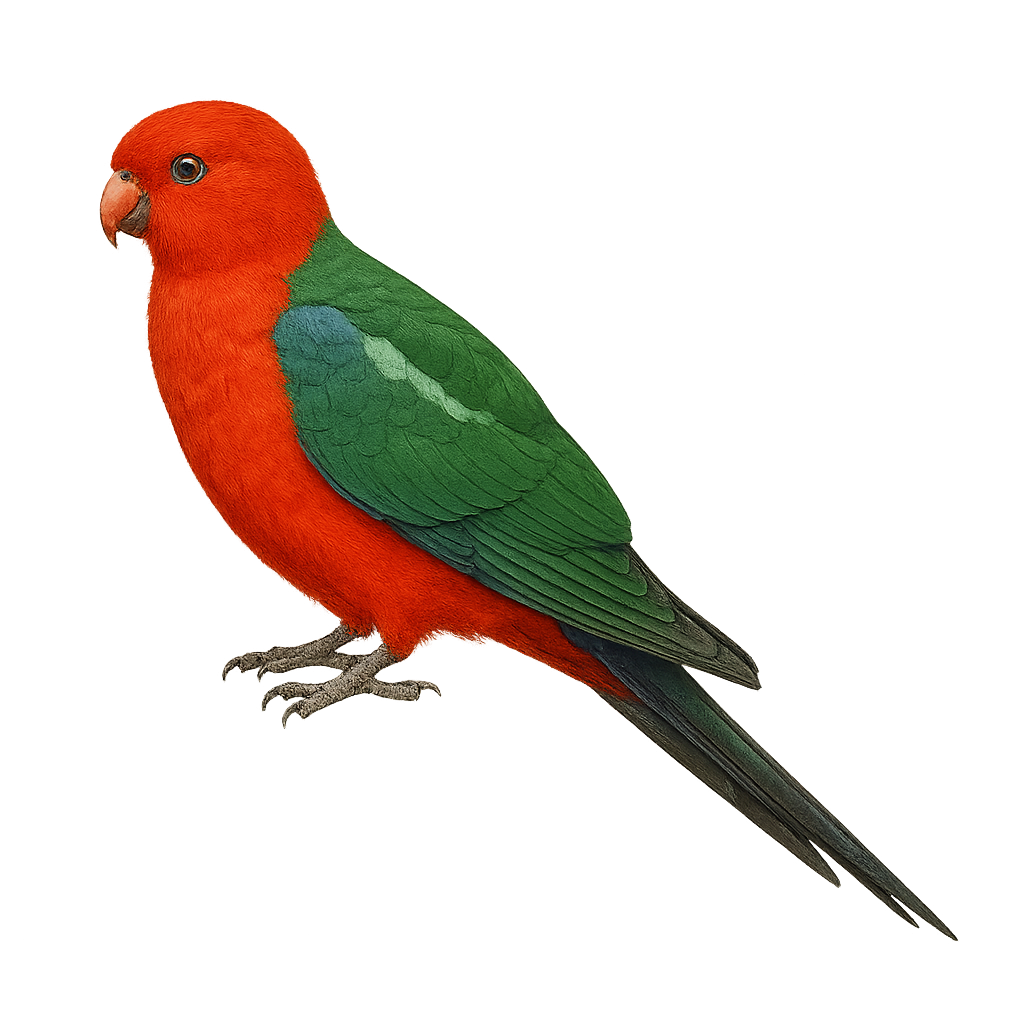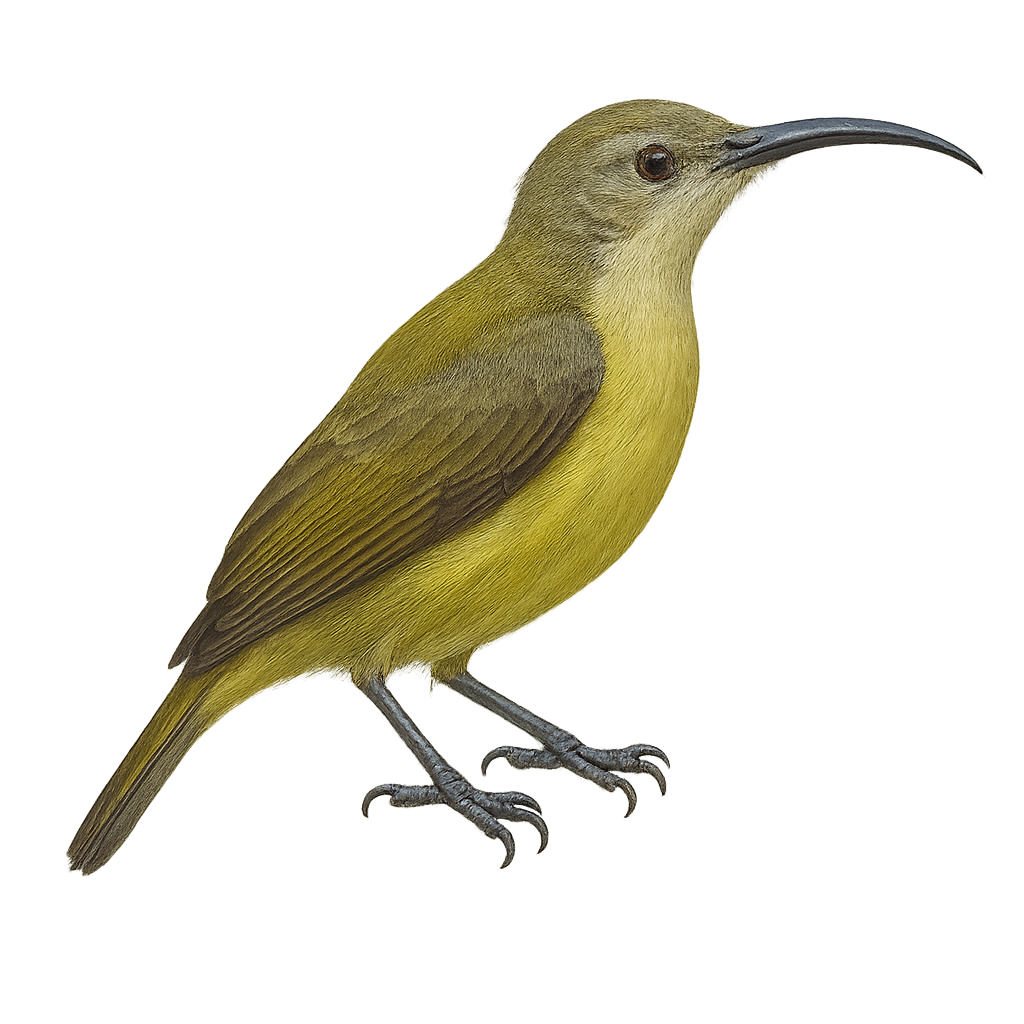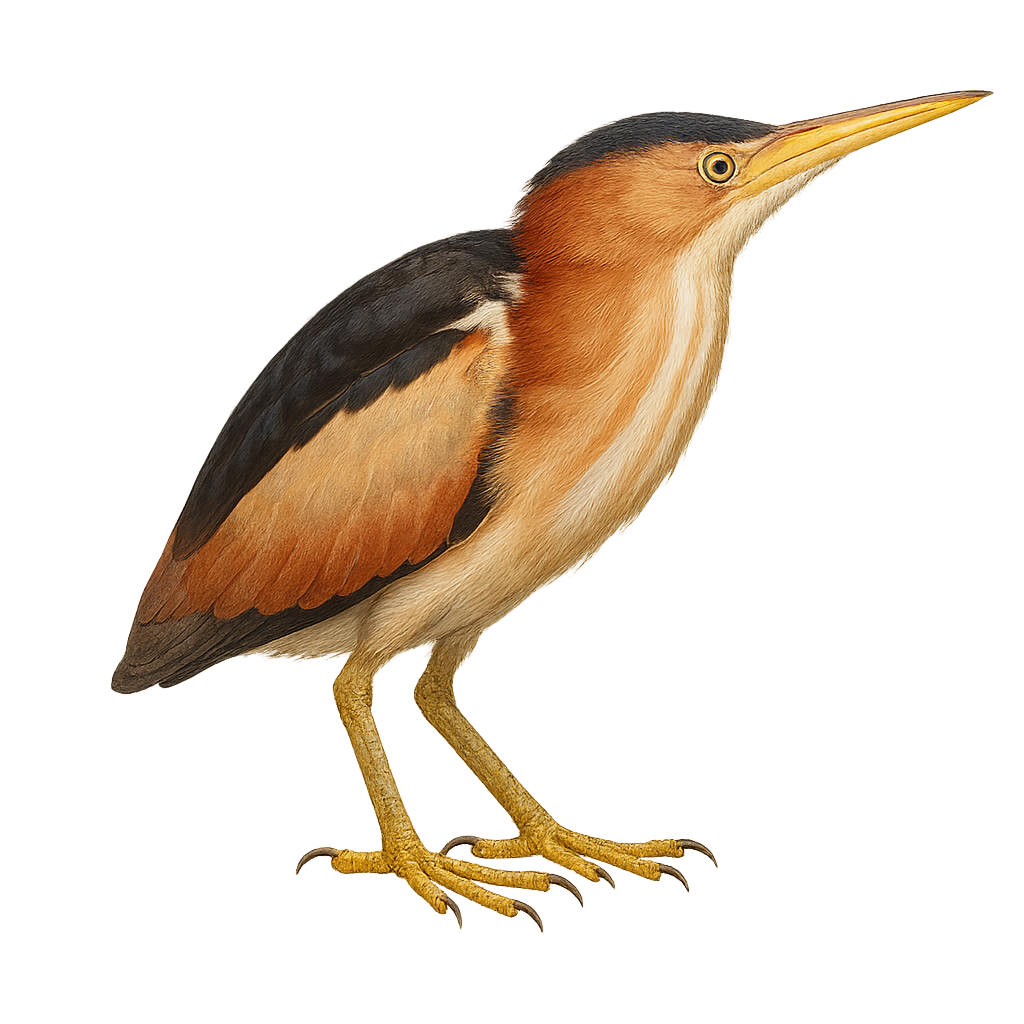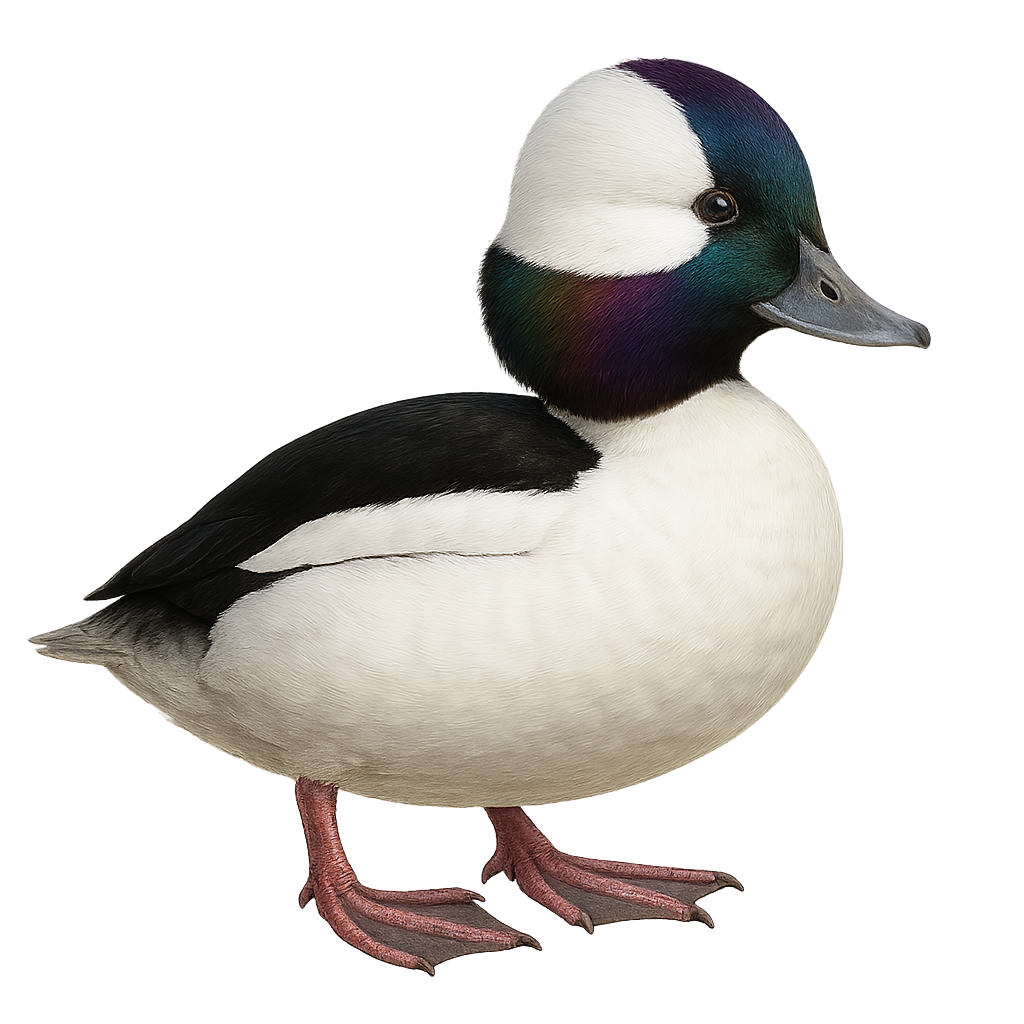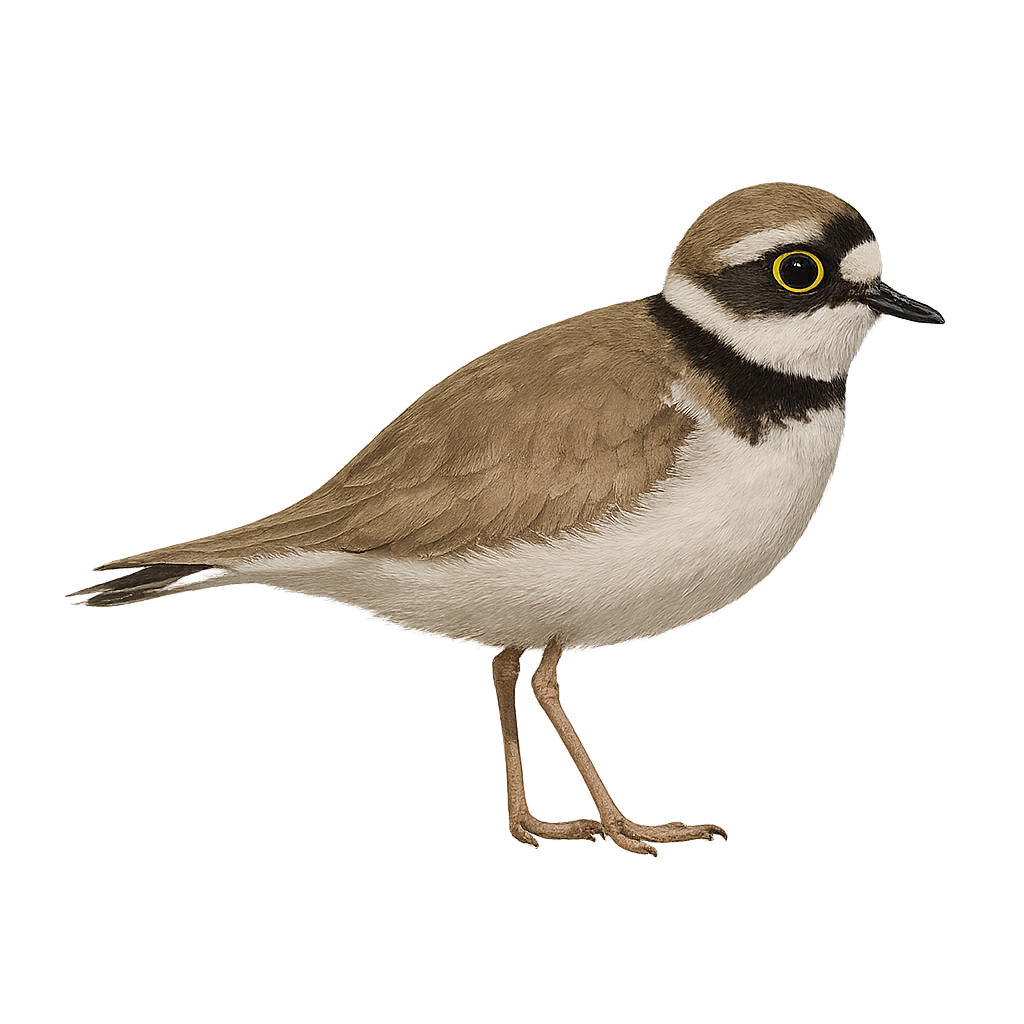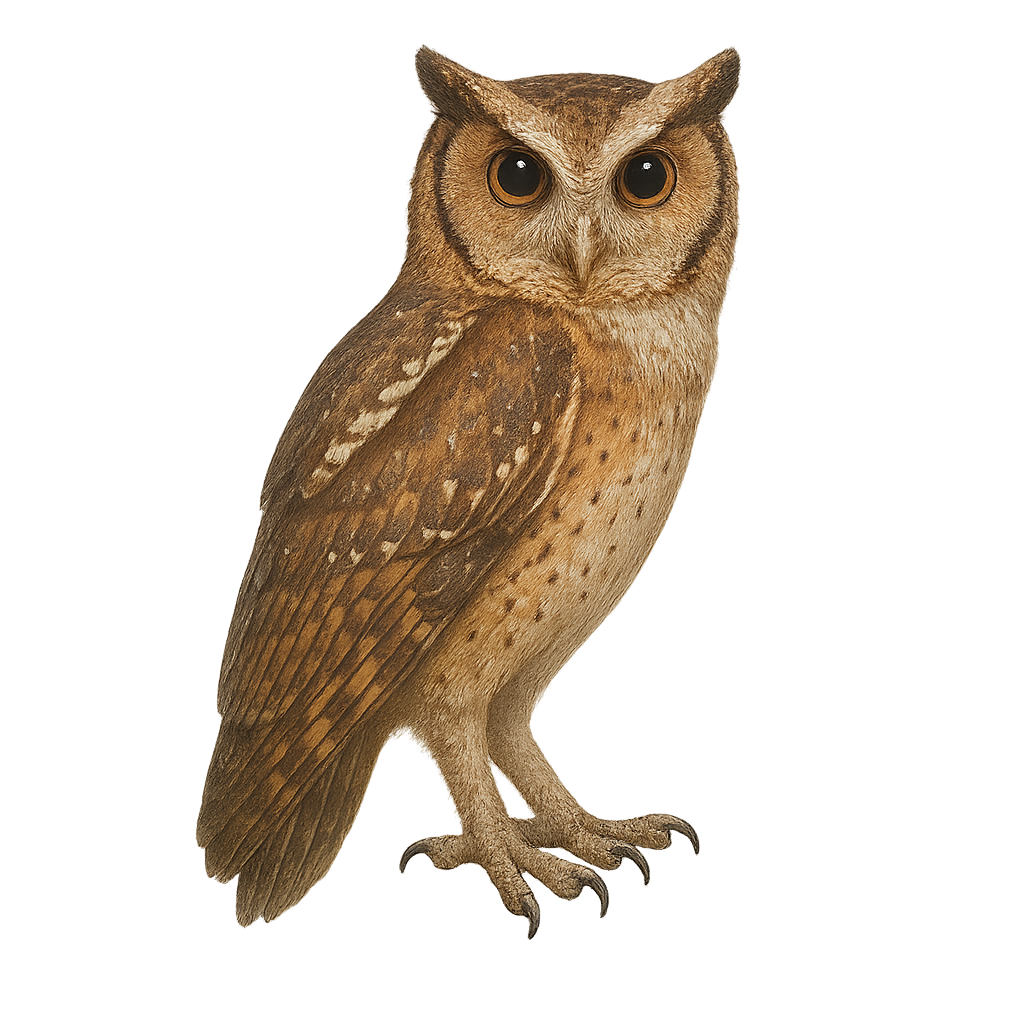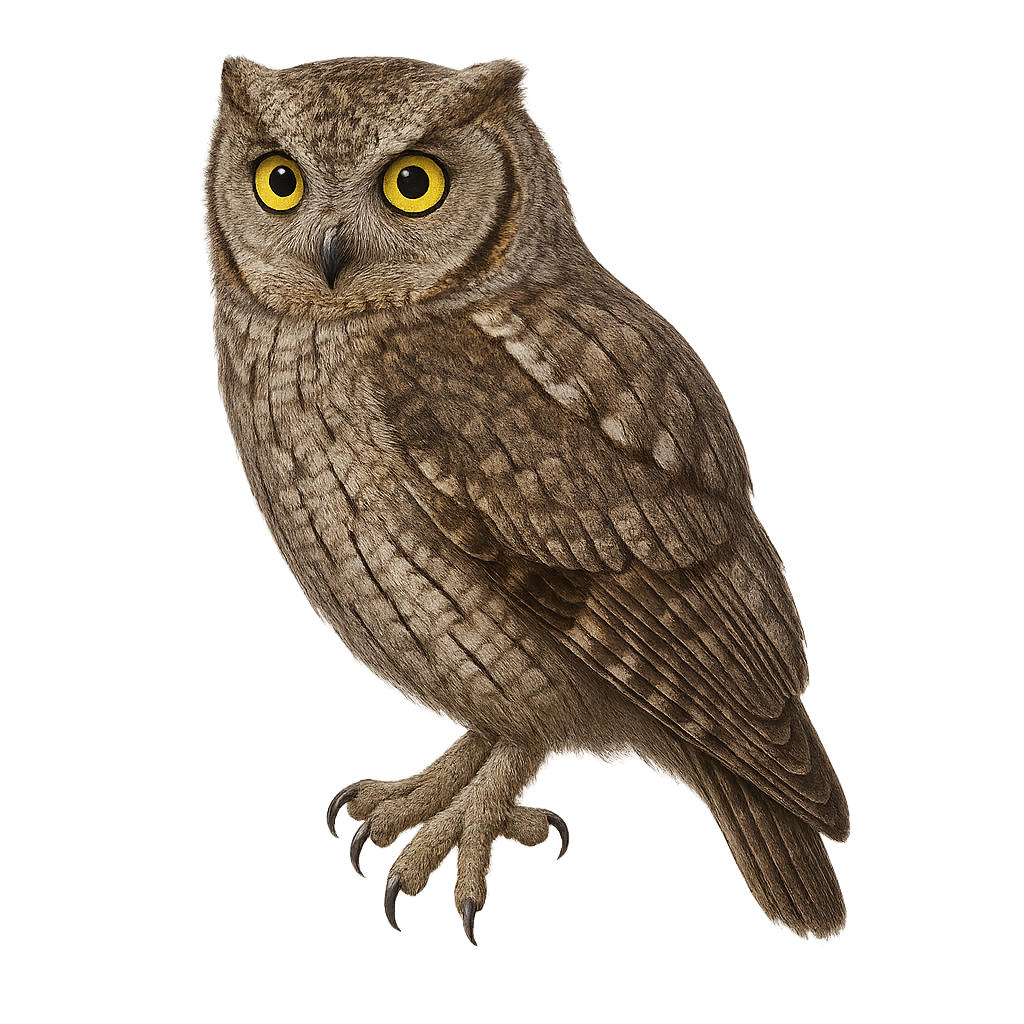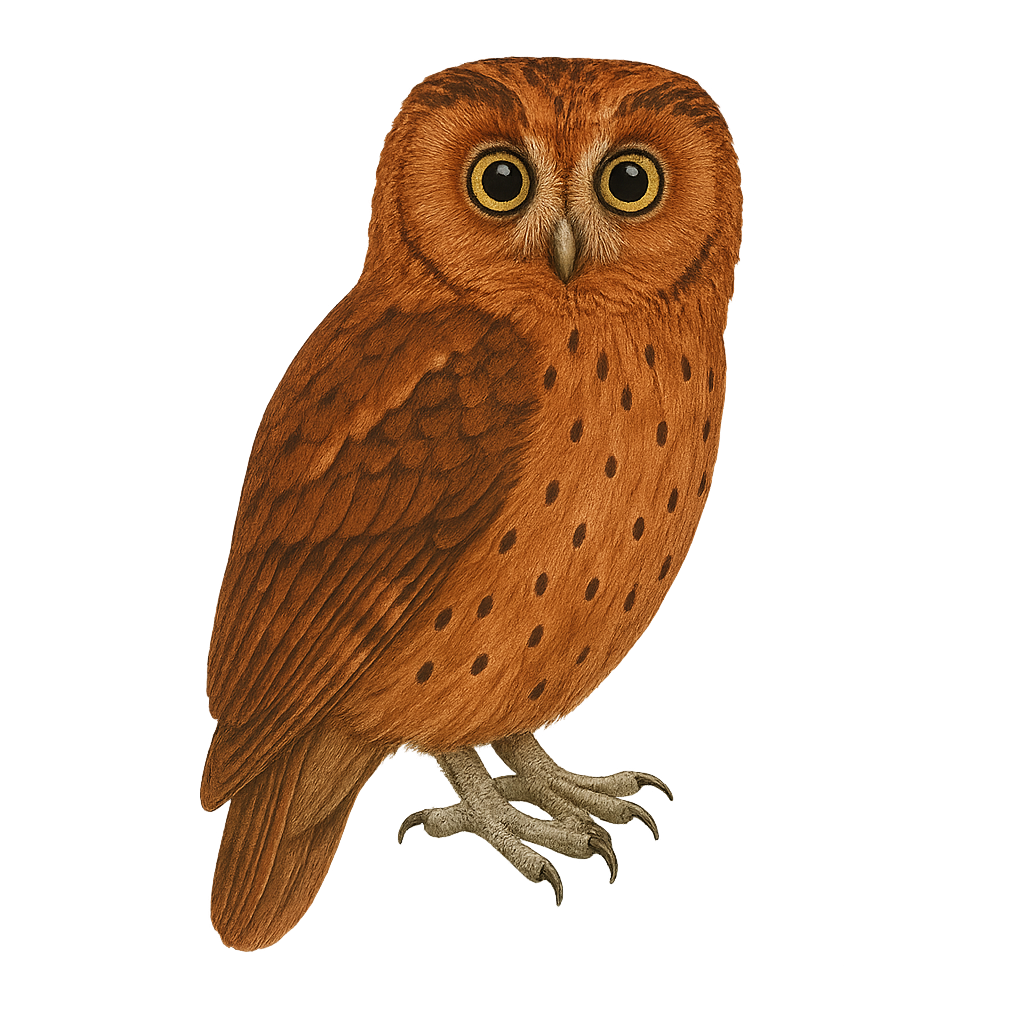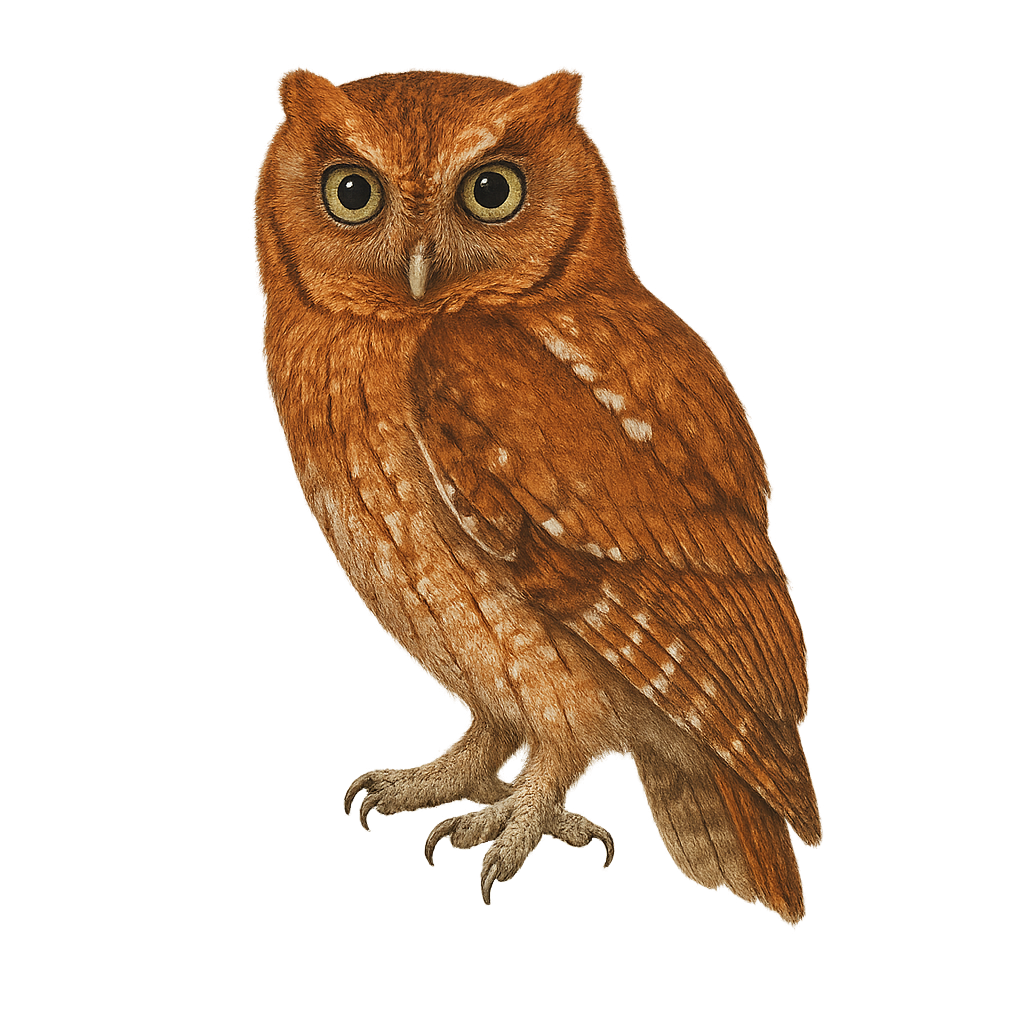The Black Flowerpiercer is a small bird from the Thraupidae family, primarily found in the Andes of Colombia, Ecuador, and northern Peru. It is distinguished by its glossy black plumage and slender, hooked bill, adapted for piercing flowers and feeding on nectar. Males and females are similar, although females may have slightly duller shades. This bird is often seen in humid montane forests and shrublands, where it plays a crucial role in pollination. Its song is a mix of high-pitched, melodious notes, often heard at dawn. Although relatively common in its natural habitat, it is rarely seen outside mountainous areas.
The Duida Flowerpiercer is a small bird endemic to the mountainous regions of Venezuela, particularly around Mount Duida. It is characterized by its slender, curved bill, perfect for piercing flowers to access nectar, although its diet also includes insects. Its plumage is primarily blue-gray with darker shades on the wings and tail. This bird is often seen darting between shrubs and trees in search of food. It is known for its melodious song and distinctive calls that echo through the cloud forests.
The Venezuelan Flowerpiercer is a bird from the Thraupidae family, endemic to the humid montane forests of Venezuela. It is recognizable by its dark plumage, often blue-black, and its thin, hooked beak, adapted for piercing flowers to feed on nectar. This bird is about 12 cm long and weighs between 10 and 15 grams. It is often seen in small groups or pairs, actively moving through the canopy in search of food. Although its habitat is limited, it is not currently considered threatened, but deforestation could pose a long-term risk.
The Glaucous Flowerpiercer is a small passerine bird belonging to the Thraupidae family. It is primarily found in the humid forests of the Andes, where it feeds on nectar and insects. Its most distinctive feature is its bright blue throat, contrasting with its grayish plumage. It uses its slender, slightly curved beak to pierce flowers and access nectar, playing an important role in pollination. This bird is often seen in small groups or pairs, actively moving through the canopy. Although not considered threatened, deforestation poses a potential threat to its natural habitat.
The Masked Flowerpiercer is a small, colorful bird from the Thraupidae family, primarily found in the montane forests of South America. It is distinguished by its bright blue plumage and the black mask around its eyes. This bird is often seen piercing flowers to feed on nectar, hence its English name "Flowerpiercer". It plays a significant role in the pollination of plants in its habitat. Although primarily frugivorous, it also consumes insects. Its presence is an indicator of the health of montane ecosystems.
The Black Flowerpiercer is a small bird from the Thraupidae family, primarily found in the mountainous regions of the Andes. It is characterized by its black plumage with slightly lighter shoulders, which gives it its name. This bird is known for its unique flower-piercing behavior, using its specialized beak to access nectar. It mainly inhabits humid forests and shrubby areas at high altitudes. Although often seen alone or in small groups, it can sometimes be found in the company of other nectarivorous bird species. Its adaptability to various habitats and diverse diet make it an important component of the Andean ecosystem.
The Barbary Partridge is a terrestrial bird native to the mountains of North Africa and Western Asia. It measures about 30 cm in height and weighs between 300 and 500 g. Its plumage is characterized by brown and gray tones, with a distinctive "V"-shaped pattern on the chest. The Barbary Partridge primarily inhabits rocky, dry mountain habitats, where it feeds on seeds, roots, berries, and small insects. It is an excellent runner and, although capable of flying, prefers to move by running through the underbrush. This species is threatened in some regions due to excessive hunting and habitat loss, and it is protected in several countries.
The chukar partridge is a medium-sized bird (30–35 cm), with grey-brown plumage barred with black and white, featuring a glossy black cap and eye-stripe. Native to arid regions of Asia and introduced in North America, it inhabits rocky slopes, scrublands and fallow fields, feeding on seeds, leaves, and insects. During the breeding season (March 1 to July 31), the male performs formal courtship displays and defends his territory with calls and rapid chases.
The Grey Partridge is a plump galliform bird, measuring 28–32 cm in length with a wingspan of about 45 cm. It is identified by its mottled brown-grey plumage and a distinctive dark horseshoe-shaped patch on the belly. Males and females are very similar, though the belly patch is usually more defined in males. Found in open farmland, grasslands, fallows, and cultivated fields across Europe and temperate Asia. It is ground-dwelling and sedentary, preferring to run rather than fly when disturbed. Its diet includes seeds, leaves, shoots, and insects, which are vital for chicks. The species is in decline in some areas due to agricultural intensification, habitat loss, and pesticide use.
The Red-legged Partridge is a medium-sized galliform bird, about 33 cm in length. It features a reddish-brown back, bluish-grey chest, and flanks striped with black and white. Its white throat is bordered by a black horseshoe-shaped collar, and it has red legs and beak. Native to southwestern Europe, it inhabits dry open areas, scrubby hills, farmlands, and fallow fields. Non-migratory and ground-dwelling, it prefers running to flying when disturbed. Its diet mainly consists of seeds, young shoots, and insects, the latter being crucial for chicks. Although listed as Least Concern by the IUCN, the Red-legged Partridge is declining in some areas due to habitat loss, overhunting, and hybridization with introduced farm-reared birds.
The Hapalopsittaca amazonina, known as the Blue-fronted Parrot, is a fascinating bird native to the humid forests of South America. This medium-sized parrot features vibrant green plumage with a distinctive blue patch on its forehead. Its strong, hooked beak is adapted for cracking nuts and seeds, which make up the bulk of its diet. Social by nature, it often lives in noisy flocks, moving through the canopy in search of food. Although its habitat is threatened by deforestation, it remains relatively common in some areas. Its ability to mimic sounds also makes it a favorite among exotic bird enthusiasts.
The Senegal parrot is a small parrot that lives in the savannas and forests of West Africa, particularly in Senegal, Guinea, and Mali. It is easily recognizable by its bright green plumage, gray head, and red cheeks. This parrot is primarily frugivorous but also feeds on seeds and nuts. It is a social and active companion, living in small groups. While not threatened, it is sometimes captured for the exotic bird trade.
The Gabon grey parrot is an iconic species known for its exceptional intelligence and ability to mimic human sounds. Native to the tropical forests of Central Africa, primarily from Gabon and the Republic of Congo, this parrot has a grey plumage and a distinctive red head. It is a social bird that primarily feeds on fruits, seeds, and nuts. Unfortunately, the species is threatened by deforestation and illegal wildlife trade.
The Pesquet's Parrot, also known as the vulturine parrot, is a unique species native to the rainforests of New Guinea. It is easily recognizable by its striking black and red plumage and its bald head, an adaptation for feeding on fruits without soiling its feathers. This parrot is primarily frugivorous, feeding on figs and other fruits. Its natural habitat includes lowland and montane forests, where it lives in small groups or pairs. Despite its impressive appearance, the Pesquet's Parrot is relatively discreet and difficult to spot in the wild. Its population is declining due to deforestation and illegal trade.
Psittacula krameri, the rose-ringed parakeet, is a parrot 38–40 cm in length with bright green plumage, a distinctive pink neck ring in adult males, and a red–orange bill. Native to South Asia, it occupies parks, orchards, agricultural lands, and urban environments, feeding on seeds, fruits, and flowers. Social and vocal, it nests in tree cavities and may switch mates within the same breeding season.
The Orange-bellied Parrot is a small parrot endemic to Australia, known for its vibrant plumage and distinct orange belly. Measuring about 20 cm in length, it features a bright green back, orange belly, and blue markings on the wings and head. This migratory species breeds in southwest Tasmania and migrates to the southeast coast of mainland Australia in winter. It primarily feeds on seeds of grasses and coastal plants. Unfortunately, it is critically endangered, with fewer than 50 wild individuals remaining. Conservation efforts include captive breeding programs and protection of its natural habitat.
The Blue-naped Parrot, or Tanygnathus lucionensis, is a colorful and fascinating bird native to the tropical forests of the Philippines. It is distinguished by its bright green plumage, characteristic blue nape, and robust beak. Measuring about 31 cm in length, it has a wingspan that allows it to move easily through the canopy. This parrot is often observed in small groups, emitting sharp calls. It primarily feeds on fruits, seeds, and flowers, playing a crucial role in seed dispersal. Although its natural habitat is threatened by deforestation, it sometimes adapts to agricultural areas. However, its population is declining, making it a conservation concern.
The Crimson Rosella, or Platycercus elegans, is a vibrant bird native to Australia. It is easily identified by its bright red plumage, contrasted with blue feathers on its wings and tail. Juveniles have a duller, often greenish plumage that transitions to the vivid colors of adults. It primarily inhabits wet forests, woodlands, and urban gardens. Sociable by nature, it often moves in small groups. Its diet is varied, including seeds, fruits, flowers, and insects. Although its habitat is threatened by deforestation, it remains relatively common. Its adaptability to human-modified environments aids its survival.
The Red-fronted Parakeet, or Cyanoramphus novaezelandiae, is a parrot endemic to New Zealand. This small bird, measuring about 25 cm in length, is easily recognizable by its bright green plumage and distinctive red frontal band. It primarily inhabits forests, shrublands, and coastal islands. Although it is an excellent flyer, it also spends a lot of time on the ground searching for seeds, fruits, and insects. The Kakariki is known for its social and curious behavior, often observed in small groups. Unfortunately, its population has declined due to predation by introduced species and habitat loss.
The Night Parrot, or Pezoporus occidentalis, is a rare and elusive bird from Australia, primarily nocturnal and difficult to spot. It is medium-sized, with green plumage speckled with yellow and black, allowing it to blend seamlessly into its arid habitat. Its short, sturdy beak is well-suited for its diet of seeds and grasses. Known for its melodious yet discreet call, this bird's song echoes across the desert plains. It is often solitary or found in small groups, moving mainly on the ground and using its wings for short flights. Its rarity and secretive behavior make it a fascinating subject of study for ornithologists and nature enthusiasts.
The budgerigar, Melopsittacus undulatus, is a small, colorful bird native to Australia. It is very popular as a pet due to its sociable nature and ability to mimic sounds. Measuring about 18 cm in length, it has predominantly green plumage with black undulations on its back and wings. Males and females can be distinguished by the color of their cere, blue in males and brown in females. In the wild, they live in large colonies and primarily feed on seeds. Highly adaptable, they can survive in various environments, from grasslands to semi-arid areas.
The Australian King Parrot, scientifically known as Alisterus scapularis, is a vibrant and captivating bird native to eastern Australia. Males are distinguished by their bright red heads, green backs, and wings adorned with red patches, while females have more subdued colors with green heads. These parrots measure about 42 cm in length and are often seen in pairs or small groups. They inhabit rainforests, woodlands, and urban gardens, feeding primarily on seeds, fruits, and flowers. Their song is melodious yet subtle, and they are known for their curious and sociable behavior towards humans.
The Little Spiderhunter is a small bird from the Nectariniidae family, predominantly found in Southeast Asia. It is characterized by its long, curved bill, perfect for extracting nectar from flowers. Its plumage is typically olive on the upper parts and paler underneath, allowing it to blend seamlessly into its natural habitat. It primarily inhabits tropical rainforests, forest edges, and occasionally gardens. This bird is often seen flitting from flower to flower, playing a crucial role in pollination. Although generally solitary, it can sometimes be observed in small groups. Its adaptability to various habitats provides resilience against environmental changes.
The Least Bittern, Botaurus exilis, is a small, elusive bird often hidden in dense marshes and reed beds. It is the smallest heron, measuring about 30 to 38 cm in length. Its plumage is mainly brown with lighter streaks, allowing it to blend seamlessly into its surroundings. Known for its vertical posture, it mimics reeds to camouflage itself. Its diet consists mainly of small fish, aquatic insects, and crustaceans. The Least Bittern is a migratory bird, spending winters in warmer regions of Central and South America. Its population is stable, but it remains vulnerable to habitat destruction.
The Bufflehead is a small diving duck, easily recognizable by its distinctive plumage. The male features an iridescent black head with a large white patch behind the eye, while the female has a brownish head with a subtle white band. This duck primarily inhabits lakes and ponds in wooded regions of North America. It is often seen diving for small aquatic invertebrates and plants. Although it is a migratory bird, it is frequently observed in winter in more southern coastal waters. The Bufflehead is appreciated for its active behavior and quick dives, making it a fascinating subject for birdwatchers and photographers.
The Little Ringed Plover is a small migratory bird primarily found in wetlands, sandy beaches, and riverbanks in Europe, Asia, and North Africa. It measures about 18 cm in length and weighs between 30 and 50 g. Its plumage is gray-brown on the back, with white underparts and a distinctive black ring around the neck and eyes. The Little Ringed Plover primarily feeds on small invertebrates, mollusks, and insects found by foraging in sand and along water edges. This bird is an excellent runner and flies very quickly. While its population remains relatively stable, the Little Ringed Plover is threatened by habitat loss, pollution, and human disturbances during its breeding season.
The White-fronted Scops Owl, Otus sagittatus, is a medium-sized bird belonging to the Strigidae family. It is characterized by its prominent ear tufts and reddish-brown plumage speckled with white, allowing it to blend into its forest environment. This owl is primarily nocturnal and inhabits the tropical and subtropical forests of Southeast Asia, including Thailand, Malaysia, and Indonesia. It feeds mainly on small mammals, insects, and occasionally small birds. Although discreet, its melodious call can be heard at night. Habitat destruction poses a threat to its population, although it is not currently considered endangered.
The Tropical Screech Owl, or Megascops choliba, is a small nocturnal bird of prey belonging to the Strigidae family. It is widely distributed across Central and South America, inhabiting various forest types, from wooded areas to the edges of tropical forests. This owl is characterized by its modest size, measuring about 23 to 25 cm in length, and its cryptic plumage that allows it to blend into its surroundings. Its plumage is generally grayish-brown with streaked patterns, providing excellent camouflage. The Tropical Screech Owl is primarily nocturnal, feeding on small insects, rodents, and occasionally small birds. Its call is a soft, repetitive trill, often heard at dusk and during the night.
The Sokoke Scops Owl, or Otus ireneae, is a small nocturnal bird of prey endemic to the coastal forests of eastern Africa, particularly in Kenya and Tanzania. This elusive owl is notable for its modest size, measuring about 16 to 18 cm in length. Its plumage is primarily brown with streaked patterns that allow it to blend seamlessly into its wooded environment. The piercing yellow eyes and subtle ear tufts are characteristic of this species. The Sokoke Scops Owl is an opportunistic predator, feeding mainly on insects and small invertebrates. It is often heard rather than seen, thanks to its soft, repetitive call. This species is currently classified as vulnerable due to deforestation and habitat loss.
The Giles's Screech Owl, scientifically known as Megascops gilesi, is a nocturnal bird of prey belonging to the Strigidae family. This small owl is notable for its cryptic plumage, which allows it to blend seamlessly into its wooded surroundings. Its modest size and subtle ear tufts make it a challenging bird to spot. Primarily active at night, it preys on small mammals, insects, and other invertebrates. Its call, a soft and repetitive trill, often echoes through the forests it inhabits. Endemic to certain regions of South America, it resides in subtropical and temperate forests. Although not extensively studied, it is considered a relatively stable species, though deforestation could threaten its habitat in the long term.


